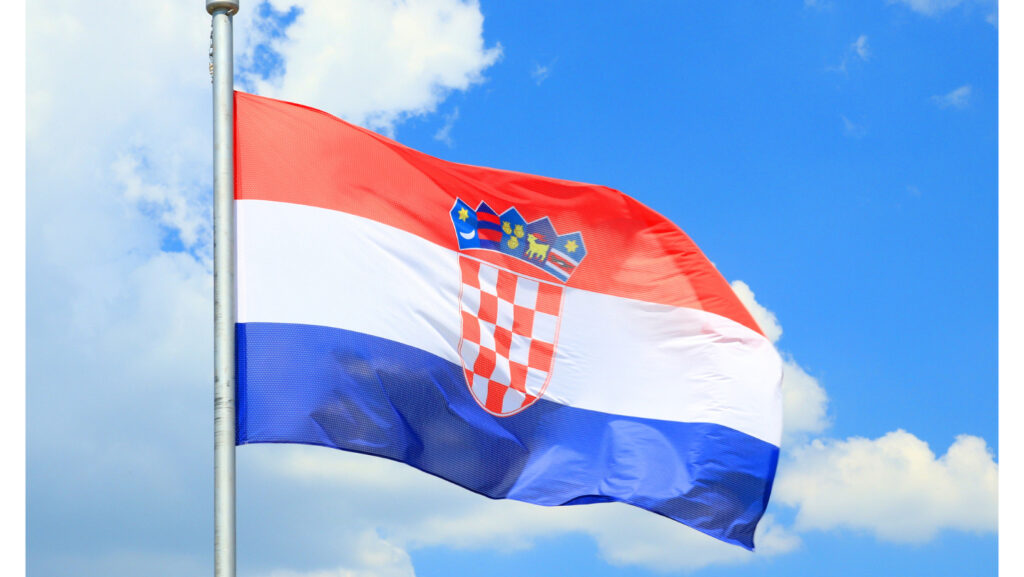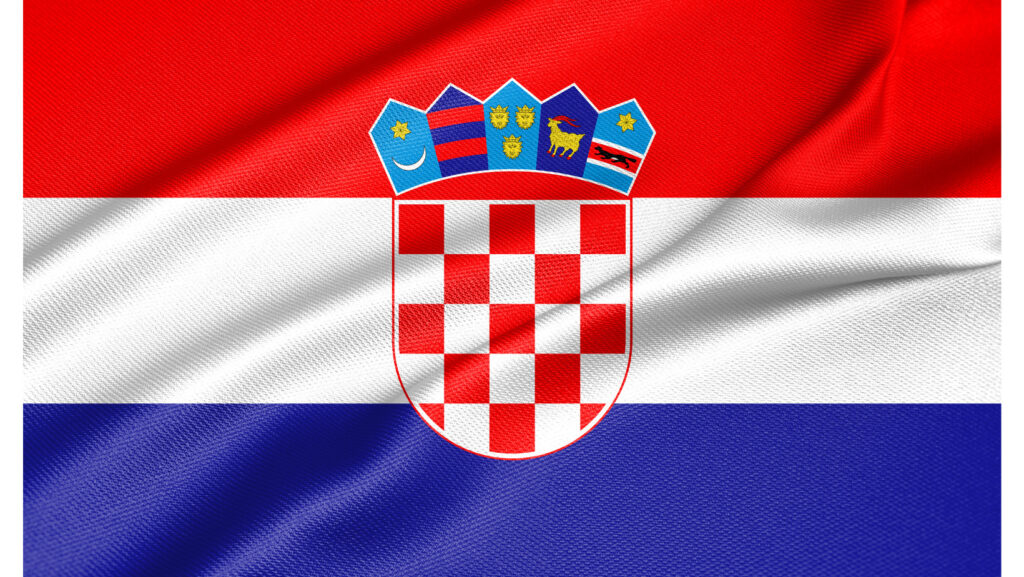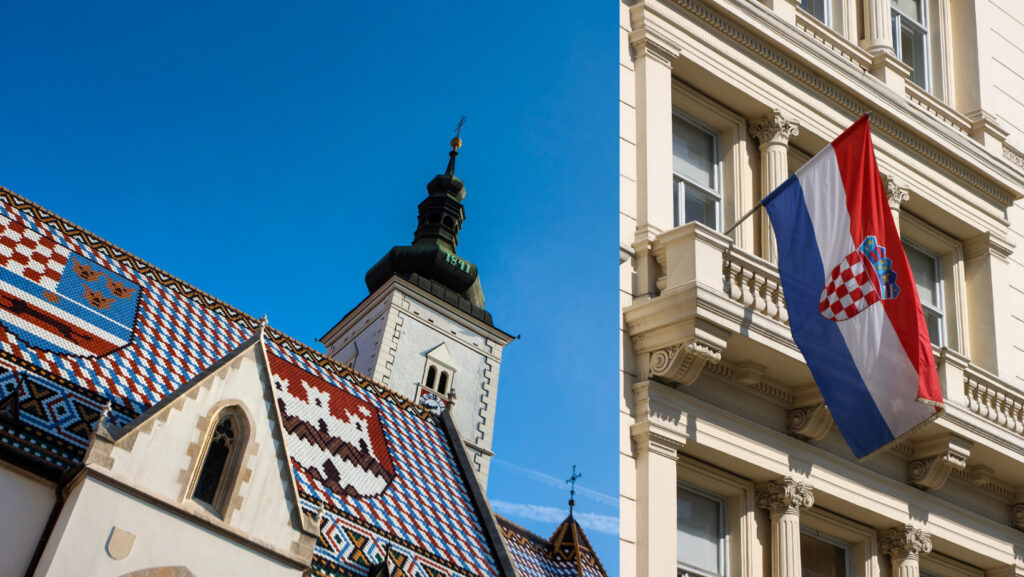
The national flag of Croatia shares a lot of similarities with other countries in the Slavic Peninsula such as Slovenia, Russia, Slovakia and Serbia. All of these Slavic nations have three equal-sized horizontal stripes of red, white and blue (trobojnica-tricolor). However, what distinguishes the National Croatian Flag is the coat of arms placed in the middle. The Croatian flag as shown above was officially adopted in 1990, prior to the declaration of Croatia’s independence in June 1991.

The current Croatian flag combines the colors of red, which represents the kingdom of Croatia, white, which represents the kingdom of Slavonia and lastly blue,which represents the kingdom of Dalmatia.The regions of these three kingdoms are the historic states of Croatia. In the center of the flag is placed a shield with the checkered red and white of Croatia and above, there is a crown that consists of other smaller shields representing Croatian’s regions through history. The first shield from the left represents Croatia which is said to be the oldest emblem of Croats from the 12th century. In the first one, there is a golden morning star and a crescent moon. The golden morningstar is claimed to be a depiction of a star called Danica which is a common name for the planet venus.The second shield represents the city state of Dubrovnik, an independent republic since the 19th century, known as the republic of Ragusa. The third shield represents Dalmatia showing three lion heads. The next one is Istria displaying a golden goat with red horns and hoofs. Last but not least, is the shield of Slovenia showing a golden morningstar, two white lines symbolizing the rivers of Drava and Sava. In the center of the shield is displayed a marten, an animal which ancient croats used its skin as a form of currency. Hence the modern currency is called Kuna which means Marten. Interesting, right?

From 925 to 1112 the checkerboard pattern, consisting of the colors red and white, started to be used as a symbol for The Kingdom of Croatia. Later on from 1112 to 1526 the Kingdom of Croatia entered a union with the Kingdom of Hungary maintaining the same checkerboard pattern on their coat of arms. From this year till the middle of the 19th century, Croatia became a member of the Kingdom of the Habsburg Monarchy. The flag was bi-color, red and white, along with the checkboarded coat of arms and a golden crown on top of it. In 1868, the autonomous region of Slavonia and Dalmatia united with the kingdom of Croatia and created the kingdom of Slavonia-Croatia. Hence they combined the colors red, white and blue on the flag. However, the Kingdom of Slavonia-Croatia still remained a part of the Austro-Hungarian empire. Some claim that these colors were chosen in defiance of their Habsburg rulers, which were the colors of their enemy, Russia.
After WWI Croatia became a member of the Kingdom Of Serbs, Croats and Slovenes and changed the name to Yugoslavia. Until 1990 Croatia was using the flag of Yugoslavia as their own . After 1990 when Independence was declared and the modern Croat state was created, the tricolor flag was a simple red and white coat of arms. The flag was very similar to the one used by the Banovina of Croatia during Yugoslavia times. The current flag of Croatia was adopted one year later, in 1991.